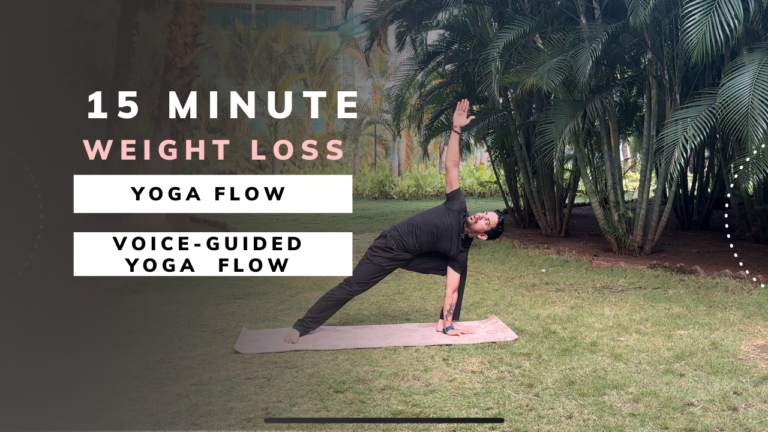In the hustle and bustle of our modern lives, where stress and anxiety often seem like unwelcome companions, the ancient practice of yoga emerges as a beacon of tranquility and balance. Beyond its physical postures, yoga is a holistic approach to well-being that extends its benevolent touch to the realm of mental health. Let’s explore how the age-old practice of yoga can be a powerful ally in nurturing a healthy mind.
Stress Reduction: The Breath of Calm
At the core of yoga lies the art of conscious breathing. Pranayama, or breath control, is a fundamental aspect of yoga that has been scientifically proven to reduce stress. Deep, rhythmic breathing activates the parasympathetic nervous system, promoting relaxation and mitigating the effects of chronic stress. Incorporating simple breathing exercises into your daily routine can be a game-changer in managing stress levels.
Here’s a list of pranayama techniques that can help calm the mind and promote relaxation:
1. Deep Abdominal Breathing (Diaphragmatic Breathing):
– Sit or lie down comfortably.
– Inhale deeply through your nose, allowing your abdomen to expand.
– Exhale slowly and completely through your mouth or nose, letting your abdomen contract.
– Focus on the rhythmic and deep nature of your breath, gradually slowing it down.
YT Video Link :- How to Do Deep Abdominal Breathing
2. Alternate Nostril Breathing (Nadi Shodhana):
– Sit in a comfortable cross-legged position.
– Close your right nostril with your right thumb and inhale deeply through the left nostril.
– Close the left nostril with your ring finger, release the right nostril, and exhale.
– Inhale through the right nostril, close it, release the left nostril, and exhale.
– Continue this alternate pattern, focusing on the breath and maintaining a smooth rhythm.
YT Video Link :- How to Do Alternate Nostril Breathing
3. Ujjayi Breath (Ocean Breath):
– Inhale deeply through your nose, filling your lungs.
– Exhale slowly through your nose, constricting the back of your throat to create a soft, audible sound (resembling ocean waves).
– Focus on the sound and sensation of your breath, allowing it to be both calming and grounding.
YT Video Link :- How to Do Ujjayi Breath
4. Sheetali Pranayama (Cooling Breath):
– Sit comfortably with an erect spine.
– Curl your tongue into a tube or make an ‘O’ shape with your lips.
– Inhale slowly and deeply through your curled tongue or pursed lips.
– Close your mouth and exhale through your nose.
– Repeat for several rounds, experiencing the cooling sensation with each breath.
YT Video Link :- How to Do Sheetali Pranayama
5. Kapalabhati (Skull Shining Breath):
– Sit comfortably with an upright spine.
– Take a deep inhalation, and then forcefully exhale through your nose by contracting your abdominal muscles.
– The inhalation is passive, and the exhalation is active and quick.
– Start with a moderate pace and gradually increase speed, then return to normal breathing after 30 rounds.
YT Video Link :- Step By Step Process To do kapalbhati
6. Bhramari Pranayama (Bee Breath):
– Sit comfortably and close your eyes.
– Inhale deeply through your nose.
– Exhale slowly while making a humming sound, like a bee.
– Feel the vibration in your head and focus on the soothing sound.
– Repeat for several rounds, allowing it to calm the mind.
YT Video Link :-How to do Bhramari Pranayama
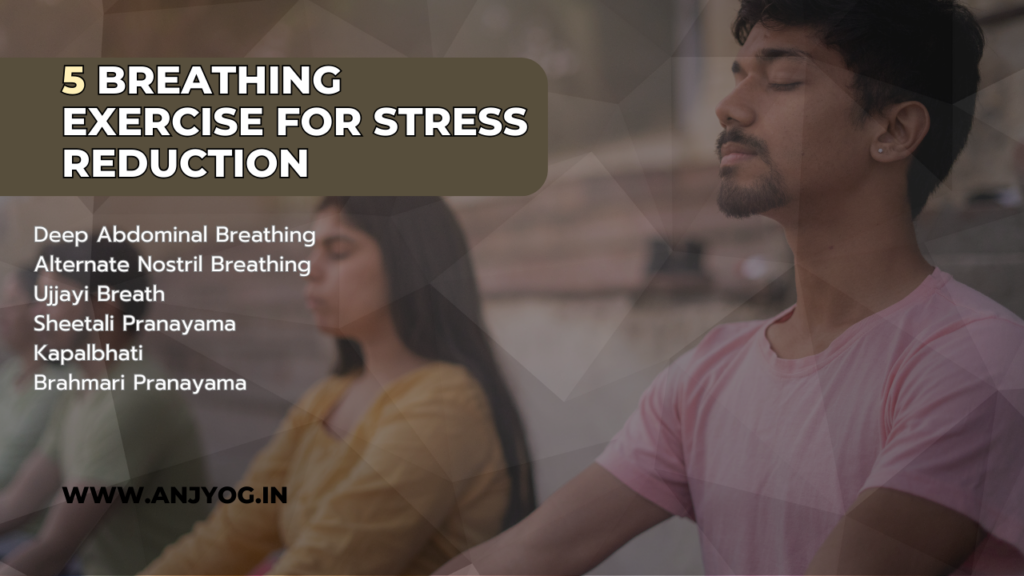
2. Mindfulness Meditation: Cultivating Present Awareness
Yoga encourages mindfulness—the practice of being fully present in the moment. Through mindful meditation, practitioners learn to observe their thoughts without judgment, fostering a sense of inner peace. This heightened awareness can break the cycle of negative thinking patterns, reducing symptoms of anxiety and depression. Research suggests that regular mindfulness practice can lead to structural changes in the brain associated with emotional regulation.
Certainly! There are several excellent websites that offer a variety of meditation resources to support your practice. Here are five of the best websites for meditation:
1. Headspace
-Website: Headspace
– Headspace is a widely popular platform that provides guided meditations, mindfulness exercises, and sleep aids. It offers a structured approach to meditation, making it accessible for beginners while also catering to more advanced practitioners.
2. Calm
– Website: Calm
– Calm is known for its serene interface and a diverse range of meditation sessions. It offers guided meditations, sleep stories, breathing exercises, and relaxing music. The platform is designed to promote relaxation, stress reduction, and improved sleep.
3. Insight Timer
– Website: Insight Timer
– Insight Timer is a community-driven meditation platform that offers a vast library of guided meditations, music tracks, and talks from various meditation teachers. It allows users to connect with a global community of meditators.
4. Mindful.org
– Website: Mindful.org
– Mindful.org is a valuable resource for those seeking mindfulness in everyday life. It provides articles, guided meditations, and practical advice on incorporating mindfulness into different aspects of life, including work, relationships, and stress management.
5. Anjyog
– Website: Anjyog
– Founded by Mukesh Palival, The Anjyog Center offers a blend of meditation and holistic wellness. It provides You qualified meditation teachers who can take your class online & Offline . Dont Forget To book your trial class with them .
Each of these websites offers a unique approach to meditation, so you may want to explore them to find the one that resonates best with your preferences and goals. Whether you’re a beginner or an experienced meditator, these platforms can provide valuable support on your mindfulness journey.
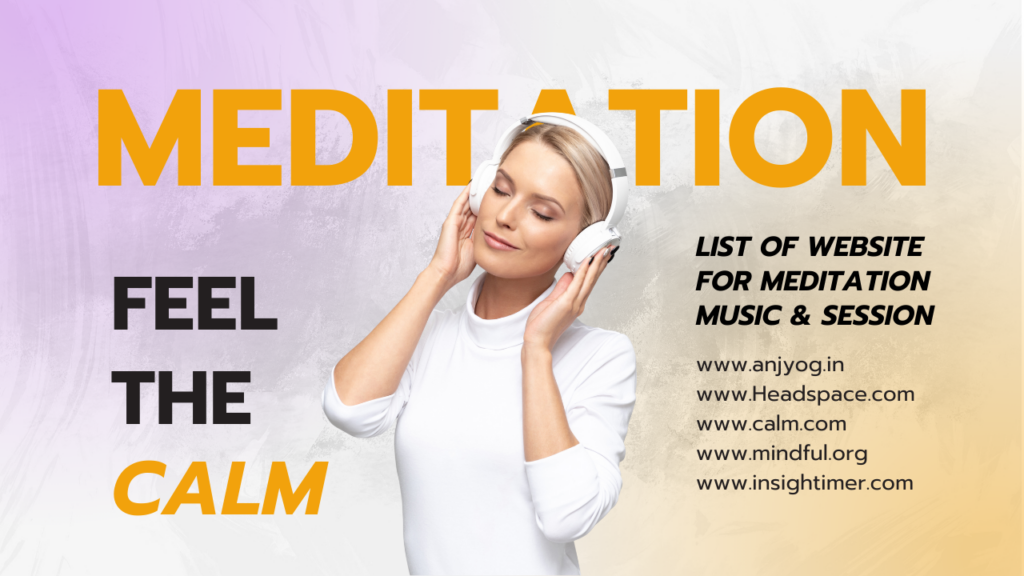
Physical Asanas: The Body-Mind Connection
The physical postures, or asanas, in yoga are not merely about flexibility and strength—they forge a profound connection between the body and mind. Asanas release tension stored in the muscles, promoting physical relaxation that extends to the mental realm. The gentle, deliberate movements engage the parasympathetic nervous system, inducing a state of calm and serenity.
YT Channel Link :- Best Yoga session From Home
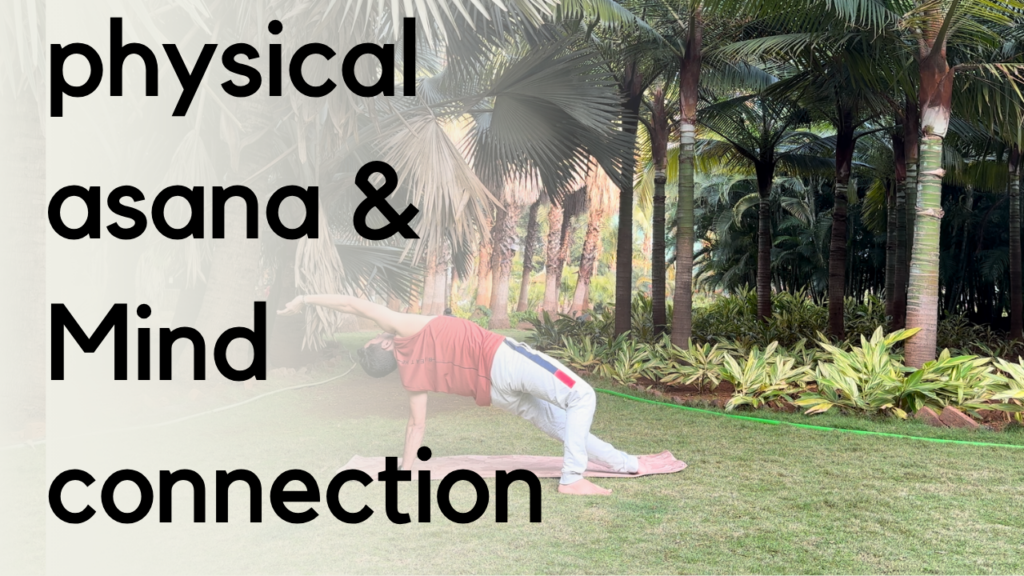
4. Emotional Resilience: Building Inner Strength
Yoga teaches us to navigate the ups and downs of life with equanimity. By cultivating a non-reactive mind on the mat, practitioners develop emotional resilience that extends to their daily lives. This resilience enables individuals to respond to challenges with greater composure, reducing the impact of stressors on mental well-being.
5. Community and Connection: Yoga Beyond the Mat
Yoga studios often become nurturing communities where individuals share their journeys and support one another. This sense of connection and belonging is crucial for mental health. Social support has been linked to improved mental well-being, and the yoga community provides a space for individuals to connect, share experiences, and uplift each other.
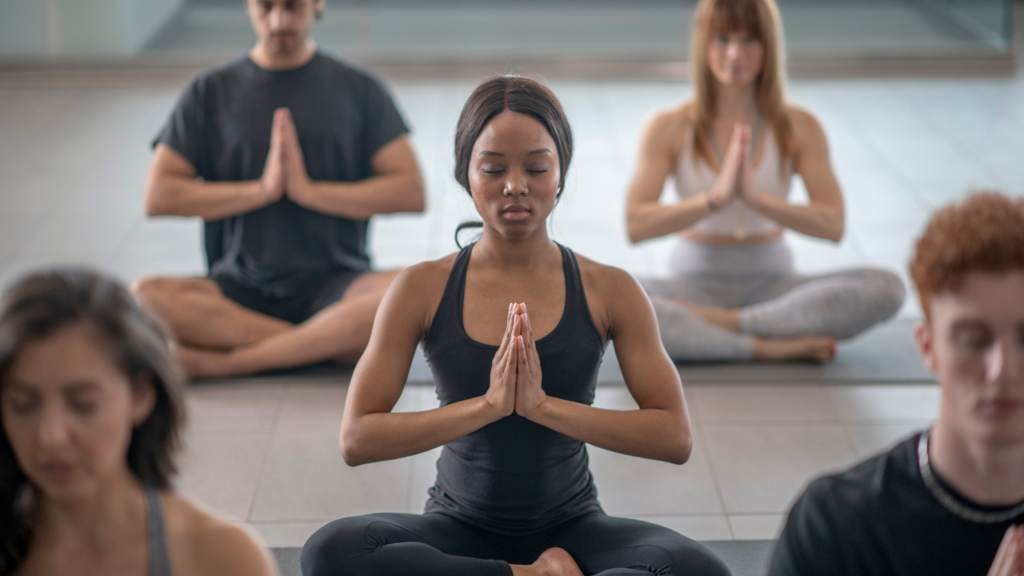
In a world characterized by constant change and challenges, yoga emerges as a steadfast companion on the journey to mental well-being. Its holistic approach, encompassing breath, movement, mindfulness, and community, creates a tapestry that nurtures the mind, body, and soul. By embracing the ancient wisdom of yoga, we embark on a transformative journey towards inner peace and harmony. So, unroll your yoga mat and embark on a voyage to rediscover the balance within.







